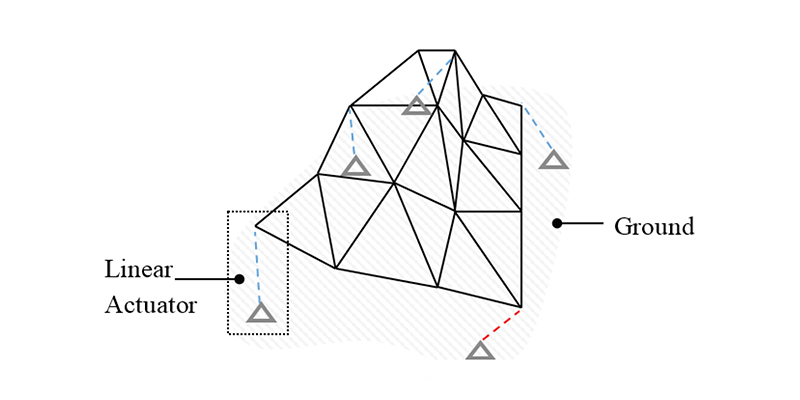Downloads
DOI:
https://doi.org/10.7480/jfde.2017.2.1737Keywords:
building façade, adaptive skins, morphing skins, optimization, energy harvestingAbstract
The development of adaptive building envelopes is receiving increasing interest in contemporary architecture, as it strives to cope with several requirements such as energy saving and harvesting (or mitigating environmental actions), improving performance and, finally, aesthetics. Actual implementation fundamentally concerns external “skins” (i.e. adaptive façades), but internal “skins” (e.g. adaptive ceilings) may also be developed.
The engineering aspects related to the above developments are quite complex and involve different behavioral models to be merged within the adaptive strategy.
In the present paper, a study is presented that concerns the conception of an adaptive origami-like solar skin. The main design issues in managing the kinematics of the envelope are then identified and the envisaged solutions, to be developed in the next stage of the research, are discussed.
How to Cite
Published
Issue
Section
License
Copyright (c) 2017 Paolo Basso, Andrea E. del Grosso

This work is licensed under a Creative Commons Attribution 4.0 International License.
Authors or their institutions retain copyright to their publications without restrictions.
References
Del Grosso A. E. and Basso P. (2010). Adaptive Building Skin Structures. Smart Materials and Structures, 19, 2010, 124011.
Del Grosso A. E. and Basso P. (2012). Multi-DOF single layer truss structures control by means of a finite-state strategy. Proc. 5th European Conference on Structural Control, Genoa, 18-20 June 2012.
Del Grosso A. E and Basso P. (2013). Adaptivity Criteria for the Design of Building Envelopes. Proceedings of the International Conference on Adaptation and Movement in Architecture. Toronto, 11-12 October 2013, pp. 2-14.
Iannucci L. and Fontanazza A. (2010). Design of Morphing Wing Structures. 3rd SEAS DTC Technical Conference, Edinburgh, UK.
Karanouh A. and Kerber E. (2015). Innovations in dynamic architecture - The Al-Bahr Towers Design and delivery of complex facades. Journal of Facade Design and Engineering, Vol. 3 (2015) 185–221, ISSN 2214-302X
Koiter W.T. (1984). On Tarnai’s conjecture with reference to both statically and kinematically indeterminate structures. (Report No.788) Delft: Laboratory for Engineering Mechanics
Prieto A., Knaack U., Auer T., Klein T. (2017). Solar façades - Main barriers for widespread façade integration of solar technologies. Journal of Façade Design and Engineering, Vol 5, No 1 (2017), ISSN 2213-3038.
Tachi T. (2010). Geometric Considerations for the Design of Rigid Origami Structures. In IASS Symposium, Shanghai.Tachi T. (2013). Designing Freeform Origami Tessellations by Generalizing Resch’s Patterns. Journal of Mechanical Design, 135(11), 111006.
Trubiano F. (2013). Performance Based Envelopes: A Theory of Spatialized Skins and the Emergence of the Integrated Design Professional. Buildings 2013, 3, 698-712; doi:10.3390/buildings3040689.
